Cobble Beach Classics - Tribute to Performance
Below you will find the stories on the 10 cars in the Cobble Beach Classic display.
We hope you enjoyed the display.
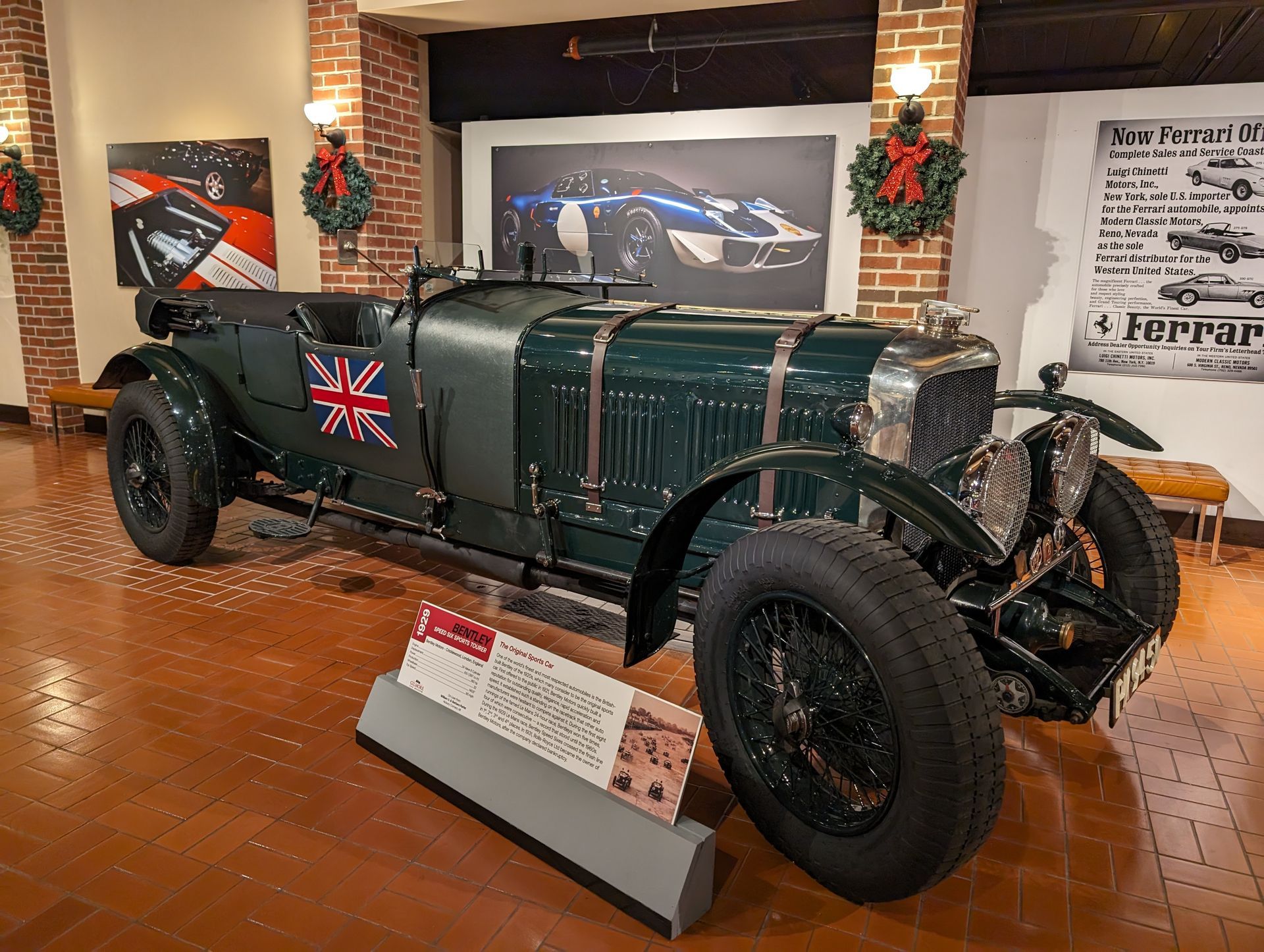
1929 Bentley Speed Six Sport Tourer,
Gilmore Car Museum, Hickory Corners, Michigan
Model Year: 1929
Number Produced: 182
Engine: 6.6L Inline 6-Cylinder
Horsepower: 180 hp
Top Speed: 84 mph
Weight: 4,705 lbs
One of the world’s finest and most respected automobiles is the British-built Bentley of the 1920s, which many consider to be the original sports car. First offered to the public in 1921, Bentley Motors quickly built a reputation for outstanding quality, elegance, rapid acceleration and speed. It established such a standing on the racetrack that other auto manufacturers were hesitant to compete against it. During the first eight runnings of the famed Le Mans 24-hour race, Bentley won five times, two of which were consecutive – a record that stood until the 1960s.
During the 1929 Le Mans race, Bentley Speed Sixes crossed the finish line in 1st, 2nd, 3rd and 4th places. In 1931 Rolls-Royce Ltd. became the owner of Bentley Motors, after the company declared bankruptcy.

1931 Alfa Romeo 6C 1750 Grand Sport,
Private Collector, Ontario
Model Year: 1931
Number Produced: 76 Grand Sport by Zagato roadsters in 1931
Engine: 6-Cylinder supercharged dual overhead cam
Horsepower: 85 hp
Top Speed: 95 mph
Weight: Approx. 2,024lbs
The 1931 Alfa Romeo body was built by Zagato. The powerful Alfa Romeo 6C 1750 exemplifies the Milanese marque’s reputation for producing sporting cars second to none. They were introduced in 1929 and produced through 1933, with a total production of 2,635. The Gran Sport version has a double-overhead-cam engine and a supercharger. The cars were sold as rolling chassis and bodied by coach builders, with this particular vehicle featuring a Zagato body. Hugely successful on the racetrack, 1750s were victorious over much larger and more powerful machinery, due to their lightness, balance, quickness and almost thought-control responsiveness over their competition.
Alfa 6Cs were racing cars with a tremendous reputation; during their three-year production, they won more than 20 international racing titles, and placed in hundreds more. Alfas were usually sold as stripped-down chassis, which clients could then add custom bodywork.

1932 Stutz Super Bearcat,
Gallery 260 Ltd., Toronto, Ontario
Model Year: 1932
Number Produced: 20 (10 survive today)
Engine: 5.3L inline eight-cylinder, double overhead camshaft engine
Horsepower: 156 hp
Top Speed: 100 mph
Weight: under 4,850 lbs (DV-32 is 4,850lbs)
By the early 1930s, the dawn of its final years, the Stutz had evolved from its original sporty nature into a true luxury car, though with the newly developed DV-32 version of the famed Vertical Eight, was still a powerful automobile. The buyer seeking a sports car from the company that had pioneered performance in America still had options, however, the most attractive was the Super Bearcat. As its name suggested, this model was intended to stand as the ideal evolution of the performance Stutz. It was built with true two-passenger bodywork by the Weymann American Body Company of Indianapolis, on a largely shortened 116-inch chassis.
It is estimated that about 20 examples of the Super Bearcat were built, with either traditional aluminum or fabric outer skin, the lighter a Weymann signature, originally developed by the firm’s French parent for competition coachwork, and famously employed on the Stutzes that ran at Le Mans in 1929.
There are less than 10 of the 1932 Stutz Super Bearcat known to exist in present day. This Stutz is a multiple Antique Automobile Club of America National Award Winner. A true factory-built “Hot Rod” of the classic era.
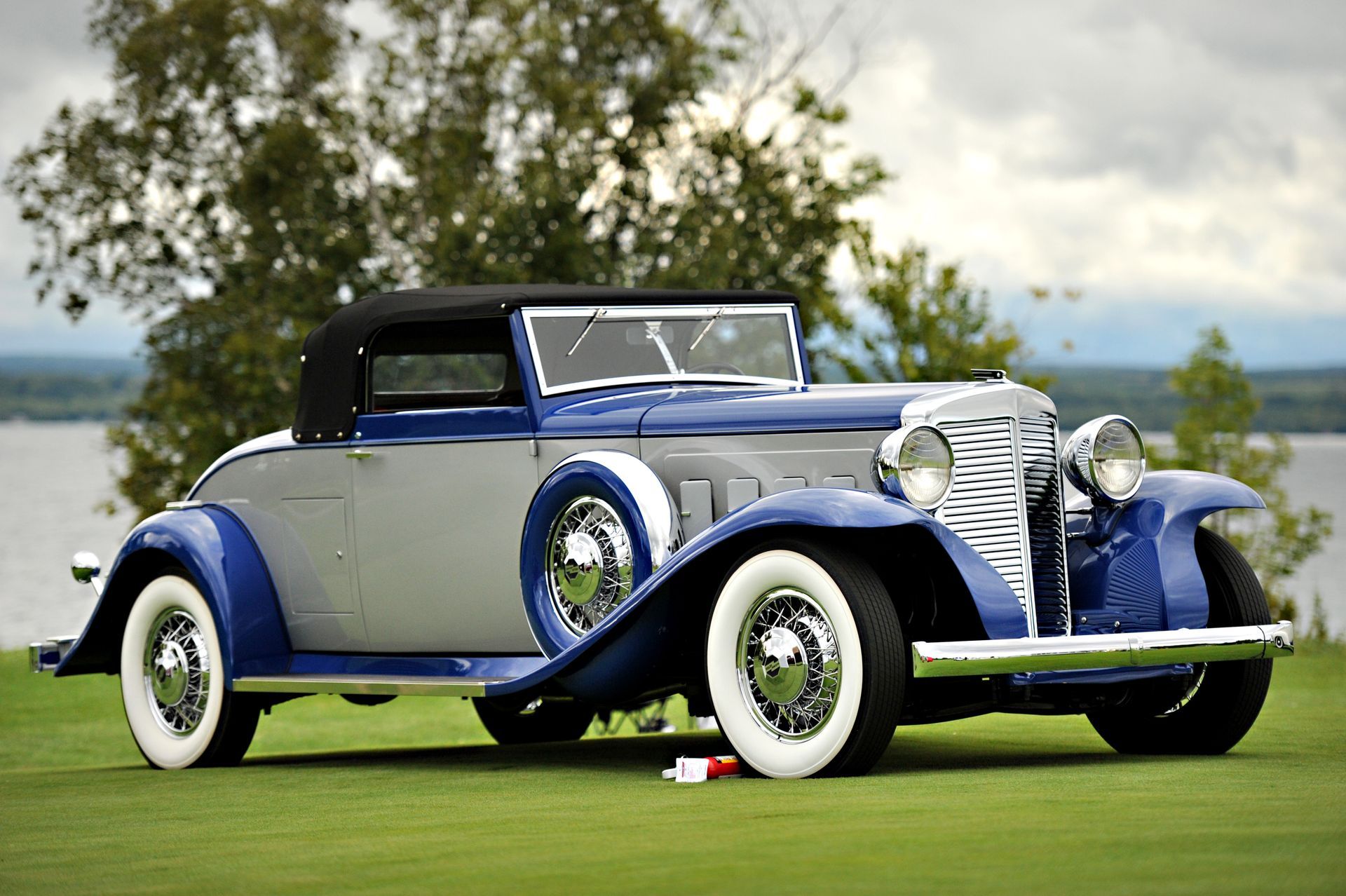
1932 Marmon Sixteen Convertible Coupe,
Gallery 260 Ltd., Toronto, Ontario
Model Year: 1932
Number Produced: 44 (8 survive today)
Engine: V16
Horsepower: 156 ph
Top Speed: 100 mph
Weight: 5,090 lbs
This Marmon Sixteen Convertible Coupe was delivered new to a Dr. Smith of Rocky River, Ohio. The next three owners – S. Manton, D. Vesley and R. Caroll – all lived in Florida. The next owner, D. Mayoras, lived in Massachusetts, and then Robert Lee from Reno, Nevada owned the car. Current owner Brent Merrill is the seventh owner. The car is one of eight remaining Marmon Sixteen Convertible Coupes and one of 44 originally produced. The 200-horsepower 16 cylinder engine has an aluminum block, and the body is aluminum over wood, made by LeBaron. Howard Marmon won a Society of Automotive Engineers award for developing the Sixteen’s engine. Unfortunately, it was not enough, and Marmon’s company succumbed to the Great Depression, closing its doors forever in 1933.

1938 Peugeot 402 Darl'mat Special Sports Roadster,
Mary & Ted Stahl, Chesterfield, Michigan
Model Year: 1938
Number Produced: 53 roadsters (approx. 30 survive today)
Engine: 2 L 4 cylinder
Horsepower: 70 hp
Top Speed: 75 mpch
Weight: 2,249 lbs
Peugeot is one of France’s oldest and most-respected marques. Having built its first automobile in 1889, the company would expand to include half of the country’s automobile production by 1903. In 1912, Peugeot would build the first dual-overhead-cam engine, a 7.6-liter four-cylinder which propelled its racing cars to victory at the 1912 and 1913 French Grand Prix. The racing legacy of Peugeot was respected by many, including a Parisian named Emile Darl’mat. In the late 1920s, Emile Darl’mat owned one of the world’s largest Peugeot dealers, located in Paris. Darl’mat sold cars in volume to the French public but was also trusted by Peugeot to sell custombodied cars to his wealthiest customers. In the mid-1930s, he had gained enough pull with the company that he was allowed to produce a car bearing his name. Darl’mat would partner with coach builder Marcel Pourtout and designer Georges Paulin to build the custom bodies for the cars. The Darl’mat Special Sport could be bodied as a cabriolet, a coupe, or a roadster, as is the case with this example of the Darl’mat. The car was designed to be a sporting car, able to be raced reliably. Because of the exceptionally-streamlined body, and the well-tuned Peugeot four-cylinder, the Special Sport Roadster would place first in its class at the 24 Hours of Le Mans in 1938. Emile Darl’mat would produce just 53 examples of the Special Sport Roadster, with only around 30 examples surviving today. The elegant coachwork of the roadster offers a gorgeous glimpse of the French Art Deco automotive style.

1957 Ferrari 250 LWB Tour de France,
Fred Fischer, St. Louis, Missouri
Model Year: 1957
Number Produced: 78
Engine: 3.0L Colombo V12
Horsepower: 256 hp
Top Speed: 150 mph
Weight: 2,359 lbs
Beginning in 1956, Ferrari built the first of their high-performance touring versions of its 250 GT model. These competition cars were constructed in Superleggera form by Scaglietti. Weight was spared using thinner alloys and Perspex side and rear windows. For even more weight reduction, the brake drums are aluminum with steel liners.
Enzo Ferrari planned to seat two of his Grand Prix winning drivers in this car to race the 1957 Tour de France. FIA regulations required cars be privately owned. Neither driver would buy this car so Shell Oil evidently did - off the record.
1957- Nurburgring 1000km. Crash while testing and DNS.
1957 - Tour de France with Maurice Trintignant and Francois Picard. Again, crashed in practice by Picard and hastily repaired to enter and finish second place.
1958 - Buenos Aires 1000km. - Finished 8th overall. Imported into U.S.
1971 - Restored with same livery as it wore in it’s 1957 Tour de France race.

1966 Shelby Cobra 427 Roadster,
Legendary Motorcar, Milton, Ontario
Model Year: 1966
Number Produced: 260 (100 Dual-Carb Street Cars)
Engine: 7.0L 427 cu.in. Dual Carb V8
Horsepower: 425 hp
Top Speed: 164 mph
Weight: 2,282 lbs
This 1966 427 Shelby Cobra is 1 of 260 street cars produced, and 1 of 100 delivered new with dual carburetors. In 1966, a CIA wiretap specialist from St. Louis Missouri purchased the car brand new and kept it until 1974. The Cobra’s second owner purchased the car and used it sparingly for nearly 50 years.
This is one of the very few 427s that has a totally unblemished history and was never modified with competition features. Today the car has only been driven 14,000 miles from new and still retains its near perfect original seats and all of its original glass. The car still has its original unmodified chassis, body, engine, transmission, rear end, and chassis tag. In 2023, Legendary Motorcar Company completed a ground up concours restoration. This 427 Cobra is undoubtedly one of the very best in existence.
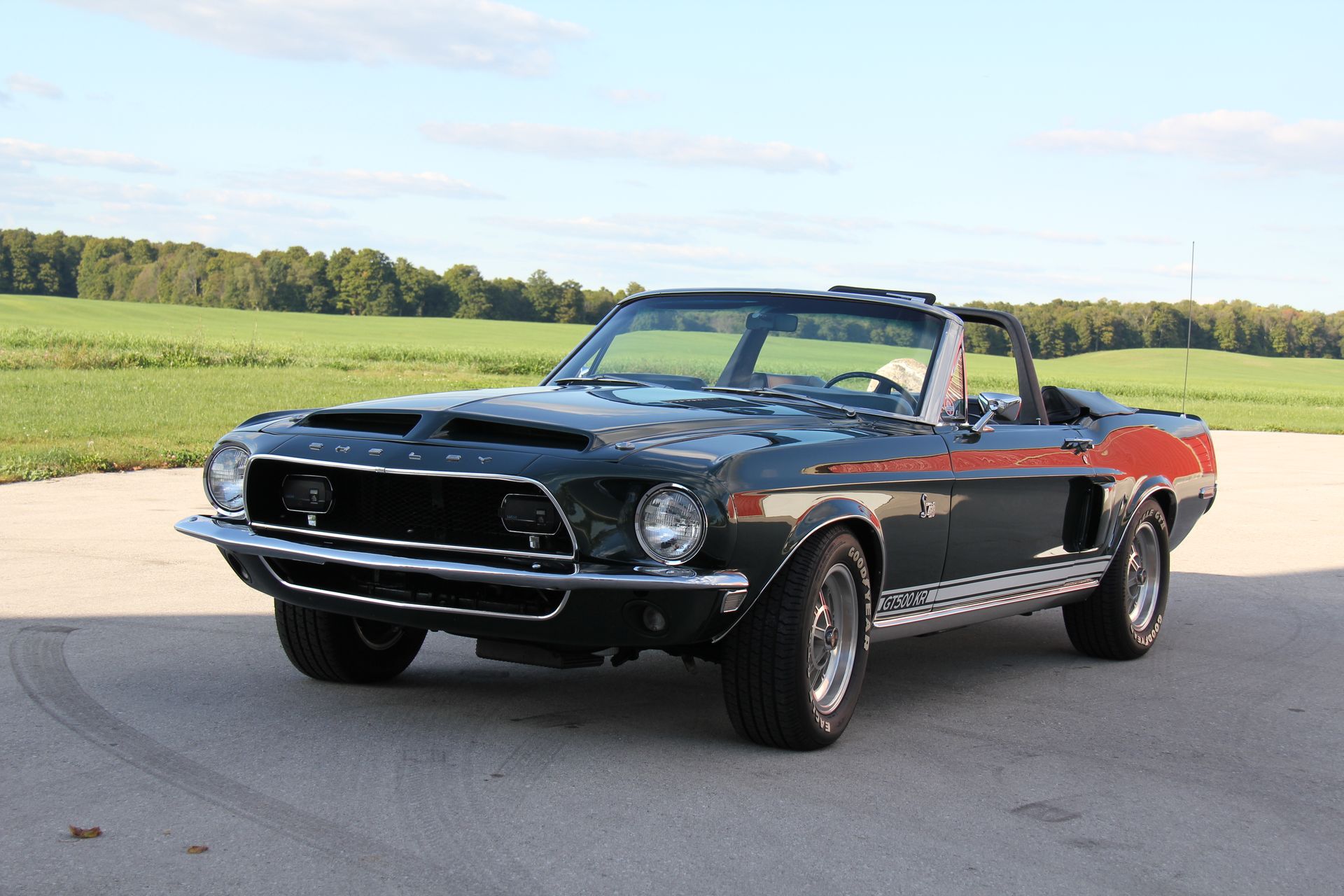
1968 Shelby Mustang GT500KR Convertible,
Tony Lang, Walkerton, Ontario
Model Year: 1968
Number Produced: 1451
Engine: 7.0L 428 Police Interceptor V8
Horsepower: 335 hp (Factory rating for insurance - really was 400 hp)
Top Speed: 140 mph
Weight: 3,730 lbs
The arrival of the beefed-up Shelby Mustang and its many versions only made things better, but Ford and Carroll Shelby felt the pony could become even more impressive. Their dream came true in April 1968, when a brand-new version of the 428 Police Interceptor engine was fitted with improved-breathing heads and larger exhaust manifolds, giving birth to the 428 Cobra Jet. The mill quickly found its way into the Shelby GT500 which became the GT500 KR “King of the Road”. Officially rated at 335 horsepower but powered by no less than 400 ponies with 440 pound-feet of torque, the King gained iconic status almost immediately. This GT500KR was sold new in Scottsdale, AZ. The restoration completed in the late 90s at 50K miles, including matching number engine reseal and transmission rebuild, misc. mechanicals, paint, seat covers & carpet. Interior is excellent. This GT500KR Convertible currently has 60,000k miles.
This GT500KR is only 1 of 3 in this colour and these options: 428 Cobra-Jet engine, C6 auto, 3:50 Traction-Lock, 10 spokes with speedways, oil cooler, A/C - highland green, black interior, white power top (new) with folding glass window, tilt-away wheel, AM/FM, Shelby Registry.
Mid-year 1968, Shelby got wind that GM intended to introduce a 396 Camaro and call it “King of the Road.” Shelby beat GM to it. Before GM could follow through, Shelby American offered a GT 500KR and stuffed the Cobra Jet engine under the hood. Total KR production was 1451. Fastbacks 933 and convertibles 518.
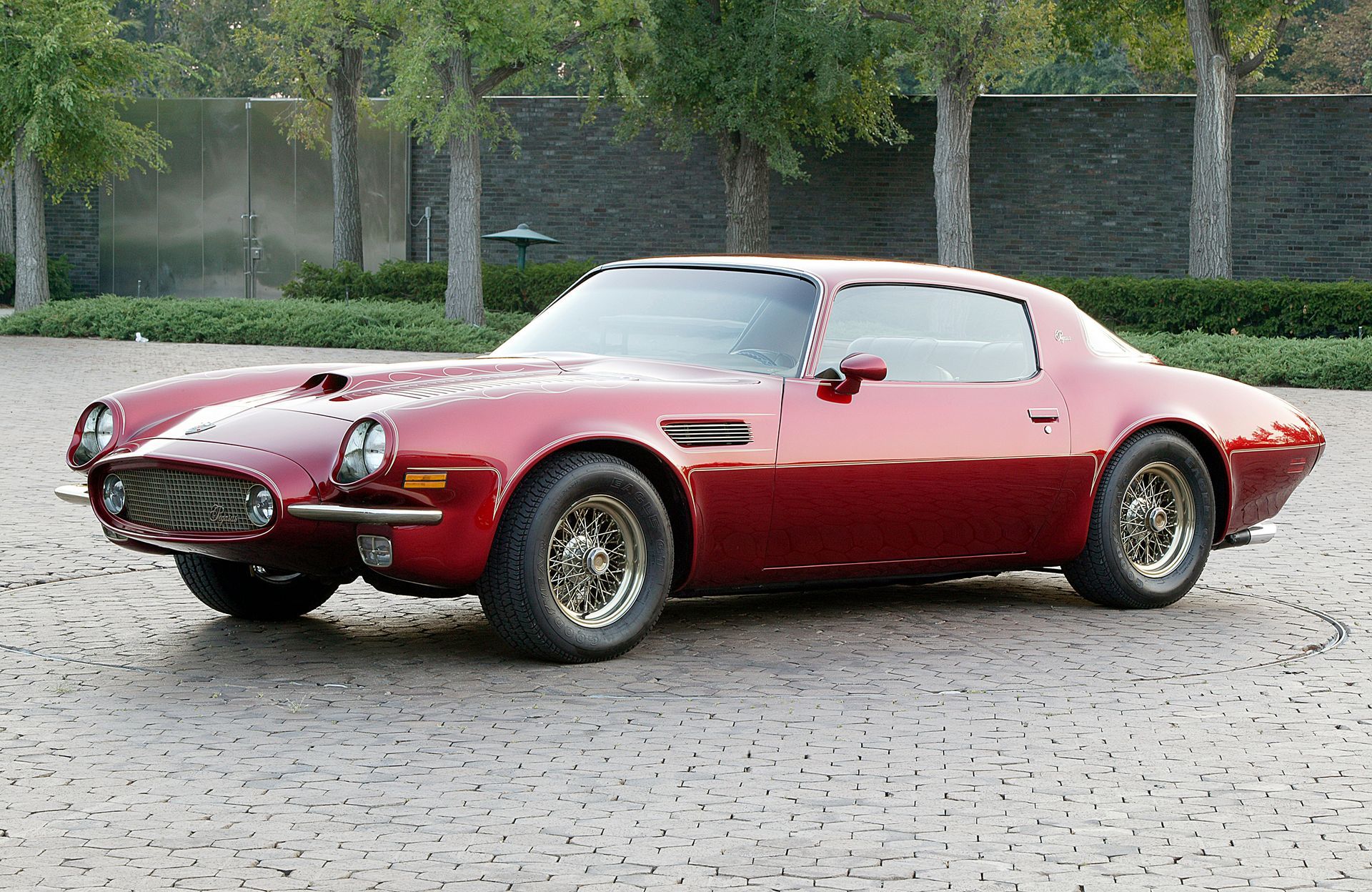
1971 Pontiac Pegasus Concept,
General Motors, Michigan
Model Year: 1971
Number Produced: 1
Engine: 4.4L V12
Horsepower: 352 hp
Top Speed: 170 mph
Weight: 3,834 lbs
The second-generation Pontiac Firebird brought European style to the brand that introduced the concept of American Muscle to the world. This theme of European style was taken a step further with the Pontiac Pegasus, a design study that began its life as a production 1970 ½ Firebird.
Inspired by a sketch he encountered in the Chevrolet 3 Studio, GM Design vice president William L. “Bill” Mitchell’s designers executed a Ferrari-inspired look that borrowed its long-nosed front end and grille from the 1958 250 Testa Rossa race car. The interior featured custom leather bucket seats sewn in the style of Ferrari and Maserati. Interior and exterior work was completed in Bill Porter’s Pontiac 1 Studio.
The Ferrari connection went deep with Pegasus. Mitchell’s friend Enzo Ferrari also contributed a 4.4-liter 365 GTB/4 V12 engine to the project which was mated to a Ferrari 5-speed transmission and a GM posi-traction rear axle. It also featured an exhaust system, mufflers and instrumentation from Ferrari as well as Corvette 4-wheel disc brakes and Borrani wire wheels. Pontiac 2 Studio assistant chief designer Bill Davis executed the original ’50s custom-style pinstriping at the request of Mitchell.
The car was a favorite of Mitchell’s. Legend has it that he wasn’t satisfied with the performance of the original V12 engine so the car was shipped back to dealer Luigi Chinetti in Connecticut for installation of the high performance version of it. Today, the Pegasus, along with both Ferrari power plants, are part of the GM Heritage Collection.
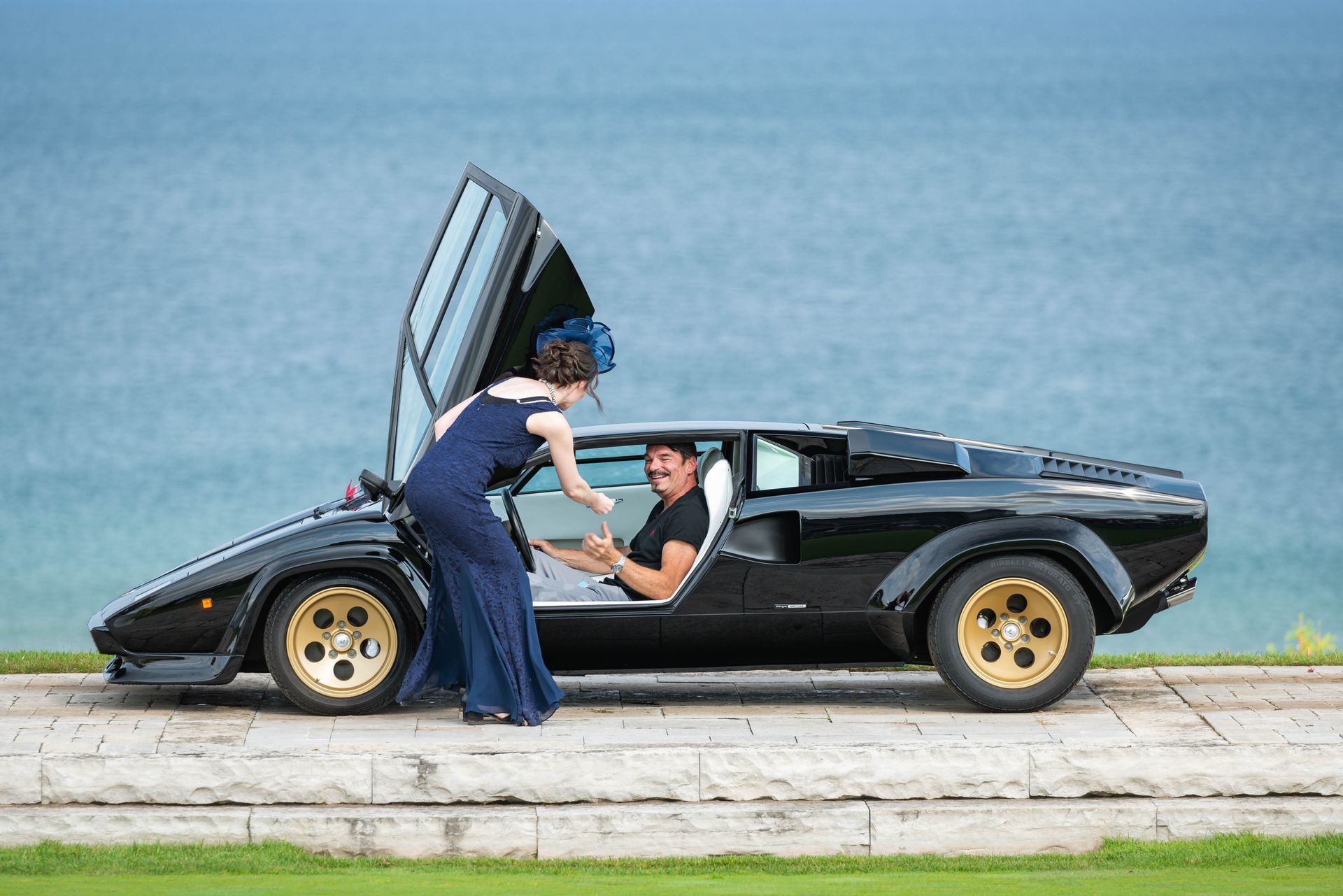
1980 Lamborghini Countach LP400S “Lowbody”,
William Halkiw, Toronto, Ontario
Model Year: 1980
Number Produced: 105 Series II LP400S
Engine: 4.0L V12
Horsepower: 335 hp
Top Speed: 193 mph
Weight: 2,910 lbs
One lucky recipient of a Lamborghini Countach was Sheikh Walid Juffali of Jeddah, Saudi Arabia, the first owner of this Countach LP400S “Low-body,” which was publicly displayed for the first time in its history at the 2023 Cobble Beach Concours d’Elegance. Juffali was the heir to Saudi Arabia’s largest privately owned enterprise, responsible for its first power generation, telecommunication, and television concessions. He acquired this special car brand-new, in Nero on Bianco with gold wheels, through a dealership in Rome. The car is documented with photos near the Juffali residence in Jeddah, which was frequented by the likes of Margaret Thatcher and George Bush. In 1983, Juffali registered his Countach in the U.K. under the number plate WJ83. He is noted to have driven the car through Europe as evidenced by windshield stickers from London and Monte Carlo.
After having accrued a mere 9,000 km, Juffali sold the car in 1990 to an acquaintance in Paris, who stored the car in a private, underground climate-controlled garage collection located a few blocks from the Seine. The second owner sold the car to William Halkiw of Toronto, Canada in 2020, at which point the car still retained its original paint, original interior, original factory date-coded tires, and showed original mileage of 11,800 km (just over 7,000 miles). In 2023, the Countach was refreshed by renowned restorer Skip McCabe of Chicago, including a fresh coat of paint and meticulous emphasis on maintaining originality throughout - a true time capsule.


